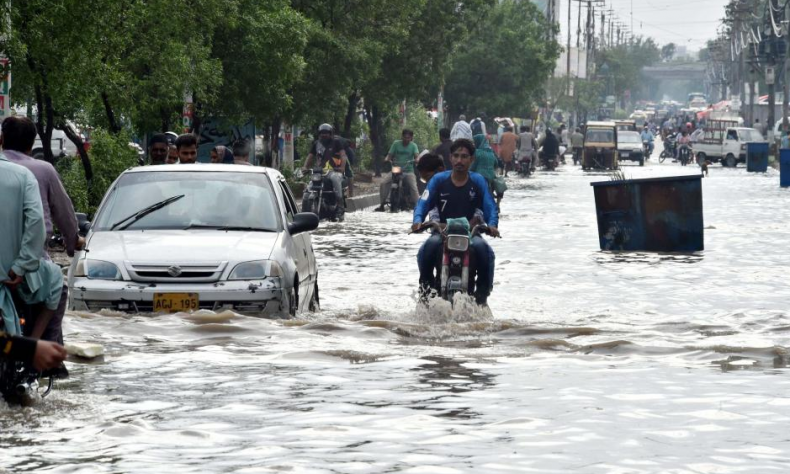China Is Playing Vital Role in Global Disaster Prevention, Reduction

Optimism for China’s role is well-founded, given its position at the forefront of global climate governance, its demonstrated commitment to climate issues, and its capacity to deploy technological expertise for international benefit.
During the recent 36th International Day for Disaster Risk Reduction, under the theme of “Fund Resilience, Not Disasters,” China shone a spotlight on its various technological breakthroughs in disaster prevention. Faced with escalating natural disasters, Beijing has consistently shown strong support for promoting interventions that can shape future growth.
Evidence suggests that climate-related natural disasters are set to surge considerably. Meanwhile, nations in the Global South continue to bear disproportionate burdens of its spillovers. Against this backdrop, China is endeavoring to build the world’s largest and most advanced meteorological observation system, alongside complex air sounding and navigation technologies, offering up lessons in capacity building for the world.
Let’s begin by looking at support from satellites. The Fengyun meteorological satellites are a central element of China’s land, sea, air and space meteorological observation system, and can provide crucial support for disaster monitoring and early warning across Asia, Africa and Latin America. The focus on extending sophisticated monitoring technologies to developing countries is in line with Beijing’s broader vision of sharing the benefits of sustainable growth. This is important because China is in the process of strengthening “SatGPT” – a new AI tool geared toward mapping flood risks and delivering rapid, open-source information to shape disaster risk reduction measures.
This comprehensive approach serves as an important contribution to the future of resilient, technology-driven open-access interventions that help nations prepare for climate-related challenges. The extension of platforms such as SatGPT to serve a wide variety of users across borders, regions and sectors further reinforces the belief that tangible, sustained and highly innovative product offerings can become catalysts for disaster management. China’s demonstrated command in diversifying technological and generative AI resources for global benefit, is therefore a win-win. In a recent article, the U.N. Economic and Social Commission for Asia and the Pacific (UNESCAP) wrote that SatGPT “represents a functional, next-generation spatial decision support system designed for rapid deployment, which would be most beneficial in flood-prone and resource-limited contexts.”
Interestingly, the use of sophisticated technology to power effective climate resilience responses is also well demonstrated. Pakistan, a close partner of China, is a case in point: The severe nationwide floods in 2022 featured a range of climate-oriented threat variants that called for effective contingencies and internationally competitive response options. The use of drones to cut through the after-effects of serious flooding is one important consideration, but given that countries such as Pakistan lack a strong technological ecosystem, there is considerable space to learn from China’s own advances to prepare for future resilience.

China clearly represents an important and compelling case. It has succeeded in launching a range of global cooperation programs to ground resilience in climate adaptation measures. This includes the MAZU-Urban early-warning system launched at the 2025 World Artificial Intelligence Conference, which shows that China is open to sharing robust development and climate focused interventions with the outside world. These interventions have been met with international praise, and have also provided considerable benefits to the global sustainable development agenda. The space for cross-regional partnerships says it all: Beijing is already in the process of utilizing its top tier universities to produce AI-powered forecasting models, with vast potential for technological collaboration with Europe and the United States. As such, engaging leading academic institutions to power the future of climate technologies is a lesson in genuine innovation.
According to the United Nations Office for Disaster Risk Reduction (UNDRR), annual direct disaster costs now exceed $200 billion. For this reason, using technology to develop sustainable solutions is a major step in the right direction. Sharing technology to power the climate ambitions of other states is also a move toward creating a sustainable future. On the significance of people-centric technology use, Kareff Rafisura, an economic affairs officer at UNESCAP, made clear in a recently co-authored article: “It is vital to remember that data and technology are only as meaningful as the lives they aim to protect.”
Creating extraordinary domestic conditions for consistent technological growth is one thing, but translating those interventions into universal public goods is another. China’s astounding success in helping to shape the green transition of several countries is abundantly clear: Its businesses are at the forefront of generating low-carbon technologies, speaking to the underlying needs of Global South nations. It must also be noted that equitable technology transfers have been a key point of concern in the past, and China’s leadership in highlighting the interests of developing countries is well-established.
The Belt and Road Initiative is an example in itself. Support for scores of capacity-building projects continues to rise, and by incorporating dozens of countries across different continents, a cooperative vision of win-win development is openly acknowledged. Beijing’s advantage goes many steps further as it is also utilizing innovation to promote urban resilience. “Globally, cities stand on the front lines of both development progress and vulnerability. They are critical drivers of innovation and economic growth, yet at the same time face increasing risks from climate change, natural disasters, and social inequalities,” said Xu Haoliang, associate administrator of the United Nations Development Program (UNDP) and acting administrator, at a recent ceremony of the inaugural RISE Week 2025.
The growing threats of catastrophic flooding, extreme weather and climate-induced disasters worldwide underscore the urgent need for robust solutions. China’s recent breakthroughs in disaster prevention create openings for governments and stakeholders to enhance protective measures and mount a coordinated response to this complex challenge. Optimism for China’s role is well-founded, given its position at the forefront of global climate governance, its demonstrated commitment to climate issues, and its capacity to deploy technological expertise for international benefit.
Hannan Hussain is co-founder and senior expert at Initiate Futures, an Islamabad-based policy think tank.
 Facebook
Facebook
 Twitter
Twitter
 Linkedin
Linkedin
 Google +
Google +










